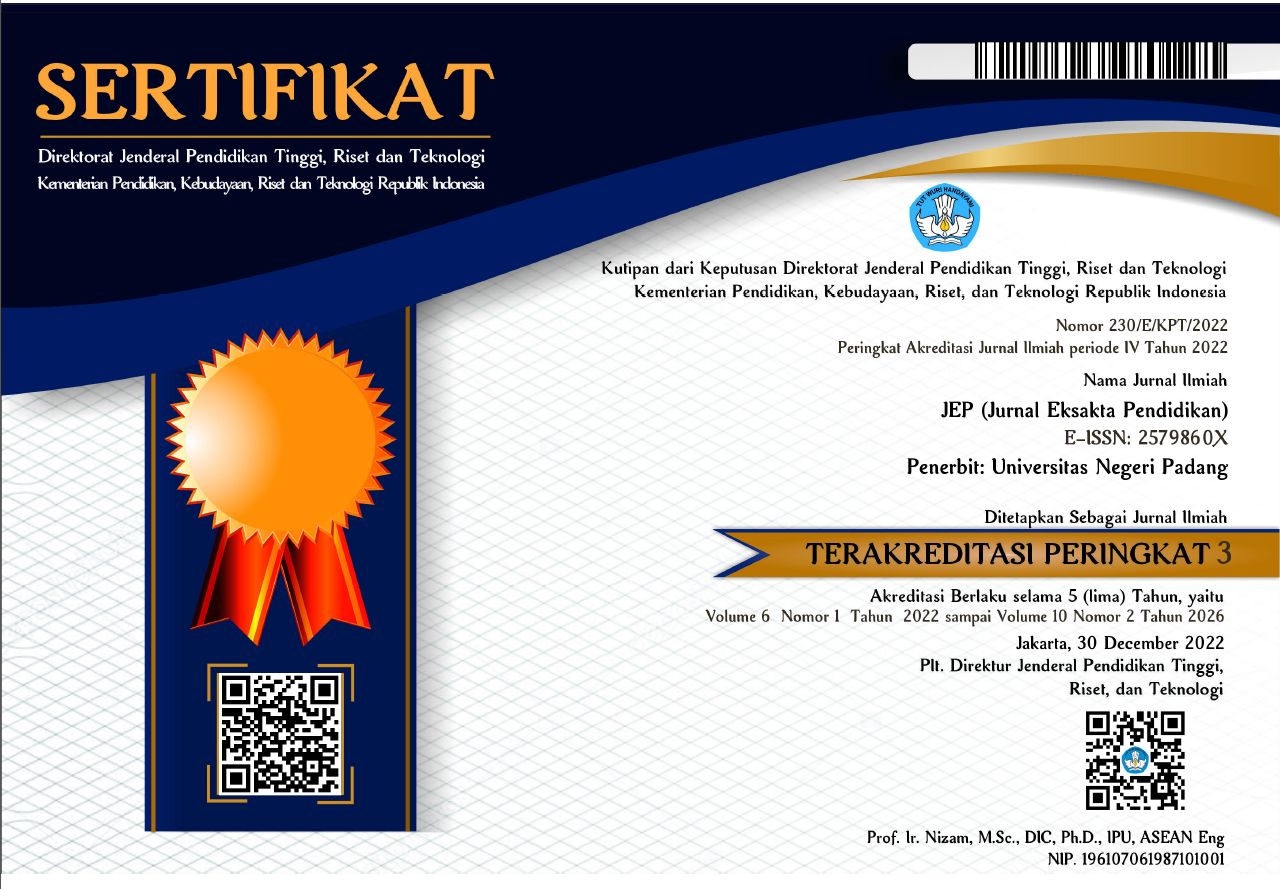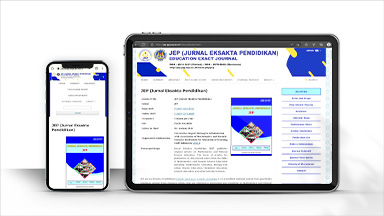Kepraktisan Video Pembelajaran Kalkulus untuk Fisika dalam Proses Belajar Daring pada Masa Pandemi Covid-19
Abstract
Corona virus disease (covid-19) has spread all over the world and became a pandemic in short time. Indonesia is one of the countries that affected by covid-19 pandemic. Covid-19 changed everything in various area including education. Online learning became one of the solutions in universities in order to keep learning process going. Unfortunately, policy to apply online learning is facing many difficulties associated with infra-structure, student economic capability and time management. Learning video is presented to overcome difficulties of online learning during covid-19 pandemic in subject of Calculus for Physics. The video presents material supported by sample problem and solution. Practicality of the learning video was examined by collecting student`s responses in aspect of ease of use, learning time efficiency, attractiveness and benefits. Data was analyzed using percentage formula to determine criteria of practicality. The result of the observation revealed that learning video of calculus for physics has a good practicality that represented by score of each aspects of 81,26% for ease of use, 83,53% for learning time efficiency, 79,87% for attractiveness and 81,08% for benefits. Based on this result we conclude that learning video is very useful to assist student in online learning during covid-19 pandemic. Furthermore, learning video could be one of the best choices in learning media to apply digital and remote learning in facing of Industrial Revolution 4.0.
Downloads
References
Al-Maroof, R. S., & Salloum, S. A. (2020). An Integrated model of continuous intention to use of google classroom. In Recent Advances in Intelligent Systems and Smart Applications (pp. 311-335): Springer.
Ali, A. Z. M., Wahid, R., Samsudin, K., & Idris, M. Z. (2013). Reading on the Computer Screen: Does Font Type Have Effects on Web Text Readability? International Education Studies, 6(3), 26-35.
Bahasoan, A. N., Ayuandiani, W., Mukhram, M., & Rahmat, A. (2020). Effectiveness of online learning in pandemic COVID-19. International Journal Of Science, Technology & Management, 1(2), 100-106.
Covid-19 Coronavirus Pandemic. (2020). Retrieved from https://www.worldometers.info/coronavirus/. Diakses tanggal 6 Desember 2020.
Iivari, N., Sharma, S., & Ventä-Olkkonen, L. (2020). Digital transformation of everyday life–How COVID-19 pandemic transformed the basic education of the young generation and why information management research should care? International Journal of Information Management, 55, 102183.
Kohnke, L., & Moorhouse, B. L. (2020). Facilitating synchronous online language learning through zoom. RELC Journal, 0033688220937235.
Mitra, B., Lewinâ€Jones, J., Barrett, H., & Williamson, S. (2010). The use of video to enable deep learning. Research in Post-Compulsory Education, 15(4), 405-414.
Pulukuri, S., & Abrams, B. (2020). Incorporating an Online Interactive Video Platform to Optimize Active Learning and Improve Student Accountability through Educational Videos. Journal of Chemical Education, 97(12), 4505-4514.
Purwanto. (2011). Evaluasi Hasil Belajar (3 ed). Jakarta: Pustaka Belajar.
Rameli, M. R. M., Alhassora, N. S. A., Bunyamin, M. A. H., & Hanri, C. Student teachers' attitude and self-esteem towards online learning: Application of rasch measurement model.
Rifandi, R., Ahmad, D., & Gestuti, M. U. (2020). Praktikalitas Media Video Tutorial sebagai Suplemen Digital Learning pada Mata Kuliah Persamaan Diferensial Biasa. Jurnal Eksakta Pendidikan, 4(1).
Ryan, M. D., & Reid, S. A. (2016). Impact of the flipped classroom on student performance and retention: A parallel controlled study in general chemistry. Journal of Chemical Education, 93(1), 13-23.
Speidel, R., Zimmermann, L., Green, L., Brito, N. H., Subiaul, F., & Barr, R. (2021). Optimizing imitation: Examining cognitive factors leading to imitation, overimitation, and goal emulation in preschoolers. Journal of Experimental Child Psychology, 203, 105036.
Syauqi, K., Munadi, S., & Triyono, M. (2020). Students’ perceptions toward vocational education on online learning during the COVID-19 pandemic. International Journal of Evaluation and Research in Education, 881-886.
Tasman, F., & Ahmad, D. (2019). Pemahaman Mahasiswa Terhadap Integral sebagai Anti Turunan, Suatu Desain Riset pada Kalkulus Integral. Jurnal Eksakta Pendidikan, 1(1), 9-16.
Vavasseur, A., Muscari, F., Meyrignac, O., Nodot, M., Dedouit, F., Revel-Mouroz, P., . . . Mokrane, F.-Z. (2020). Blended learning of radiology improves medical students’ performance, satisfaction, and engagement. Insights into Imaging, 11(1), 61.
Velavan, T. P., & Meyer, C. G. (2020). The COVIDâ€19 epidemic. Tropical medicine & international health, 25(3), 278.
Yawson, D. E., & Yamoah, F. A. (2020). Understanding satisfaction essentials of E-learning in higher education: A multi-generational cohort perspective. Heliyon, 6(11), e05519.
Yee, A., Padovano, W. M., Fox, I. K., Hill, E. J. R., Rowe, A. G., Brunt, L. M., . . . Mackinnon, S. E. (2020). Video-based Learning in Surgery: Establishing Surgeon Engagement and Utilization of Variable-duration Videos. Annals of Surgery, 272(6), 1012-1019.
Zhang, D., Zhou, L., Briggs, R. O., & Nunamaker, J. F. (2006). Instructional video in e-learning: Assessing the impact of interactive video on learning effectiveness. Information & Management, 43(1), 15-27.
Copyright (c) 2021 Rahmat Hidayat, Putri Dwi Sundari, Fadhila Ulfa Jhora, Hidayati Hidayati

This work is licensed under a Creative Commons Attribution 4.0 International License.

This work is licensed under a Creative Commons Attribution 4.0 International License.




_(2579-860X).png)
_(2614-1221)1.png)




